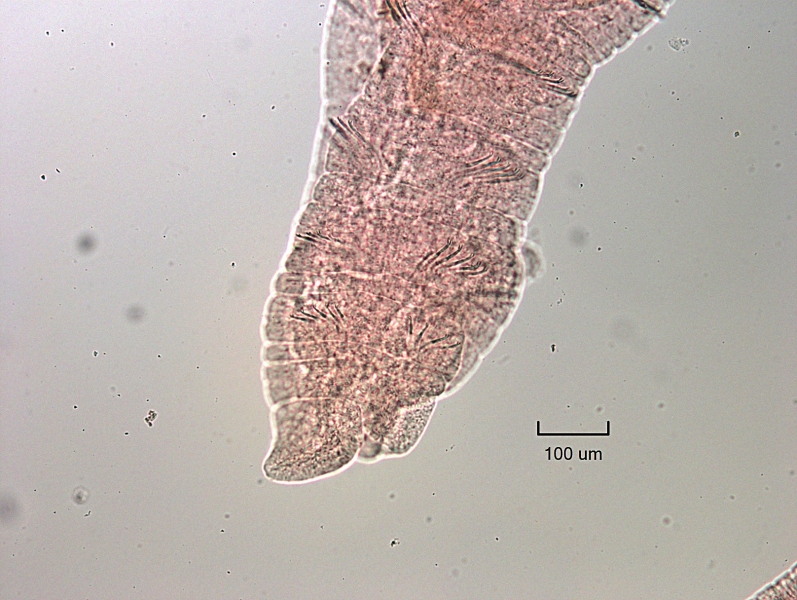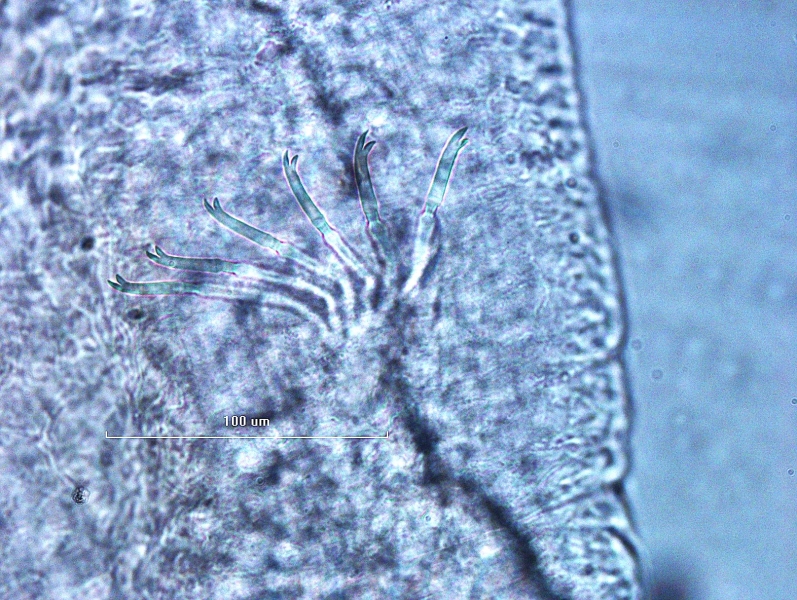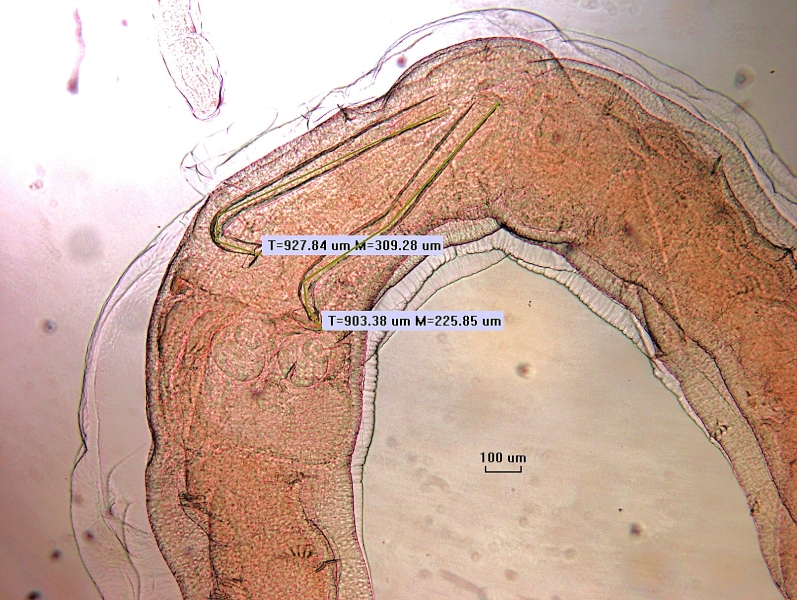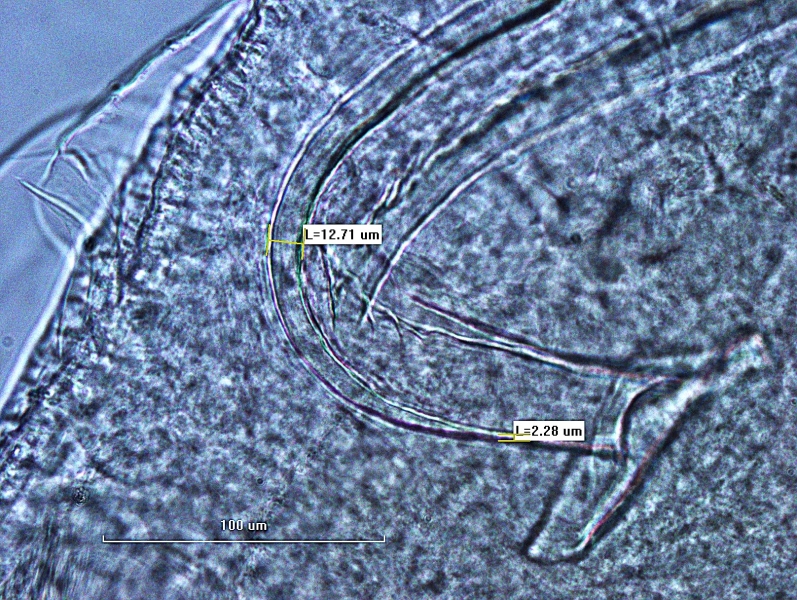Limnodrilus maumeensis
Taxa description
Limnodrilus maumeensis Brinkhurst and Cook, 1966 is a freshwater oligochaete worm that is common in the Great Lakes. It is a tubificid worm with bifid dorsal and ventral chaetae beginning in II and long cuticular penis sheaths in XI when mature. The anterior bundles have up to 10 chaetae. It is common for Limnodrilus spp. to have variation in the chaetae, but the upper teeth of L. maumeensis are a little longer and thinner than the lower. The penis sheaths are generally >1000 μm but less than 1500 μm and have thick, single-layered walls that may be thicker on one side, causing a bend in the sheath. The walls may also narrow slightly right below the head. The head plate is large, asymmetrical, and broadly triangular with a curved tip.
Distinguishing features
L. maumeensis is mainly identified by long penis sheaths, without which it will just appear as an immature tubificid worm without hairs. The penis sheaths are >1000 μm long with thick, single-layered walls that may have a bend, and the head plate is large and broadly triangular with a curved tip. The chaetae are all bifid with the upper tooth a little longer and thinner than the lower, and no hair chaetae.
Habitat
L. maumeensis can be found in soft substrates, exclusively in environments that are organically enriched or polluted, like harbors and river mouths, where it can be very abundant.
Lake occurrence
Lakes Erie and Huron.
Similar species
Without the presence of reproductive features, many tubificid worm species can only be identified as “immature tubificid with or without hair.” The length of the penis sheaths separates L. maumeensis from most of the other Limnodrilus species, but it still could be confused with L. cervix, L. claparedeianus, and L. cervix/claparedeianus hybrid. L. claparedeianus may have penis sheaths as long as or longer than L. maumeensis, but the head of L. claparedeianus is usually a small, symmetrical triangle at a slight angle to the shaft, with no curved tip, and the shaft is thin and doesn’t typically have a bend. L. cervix is also similar to L. maumeensis because L. cervix has thick walls, although they are distinctly two-layered and have a pronounced narrowing in the shaft below the head plate. L. cervix has a smaller head plate that has a triangular upper lobe with no curved tip and a lower digitate lobe. There are some specimens that appear to be a cross between L. cervix and L. claparedeianus, often denoted as L. cervix/claparedeianus. These specimens share features of both species, with a smaller, triangular head plate and thickened walls, or a larger head with a lower digitate lobe and thinner, almost one-layered walls. Finally, there is a chance that the penis sheaths may be shorter than 1000 μm because they aren’t fully developed and thus be closer to the size range of L. hoffmeisteri. Even if the penis sheaths are underdeveloped, however, they should still have a thick, bent shaft and a large, triangular head with a curved upper tip that help with the correct identification.
Another species with long penis sheaths and bifid chaetae is Varichaetadrilus angustipenis. The length is not noted in the keys, but it has long penis sheaths with small head plates usually perpendicular to the shaft, with the basal portion conical instead of cylindrical and sometimes crumpled. The other identifying factor is having chaetae in II with the upper tooth distinctly shorter and thinner than the lower. L. maumeensis has a cylindrical shaft with thick walls that may be bent, with a large, broadly triangular head with a curved tip, but all of the bifid chaetae usually have the upper tooth a little longer and thinner than the lower, not distinctly shorter.
Relative size
L. maumeensis is a relatively large freshwater oligochaete.
Does it have a barcode reference from the Great Lakes?
Yes, this species does have a barcode reference from the Great Lakes.
References
Kathman, R.D., and R.O. Brinkhurst. 1998. Guide to Freshwater Oligochaetes of North America. pp. 162–163, 134, 154–162, 172–173.
Stimpson, K.S., D.J. Klemm, and J.K. Hiltunen. 1982. A Guide to the Freshwater Tubificidae (Annelida: Clitellata: Oligochaeta) of North America. pp. 36–39, 47.







